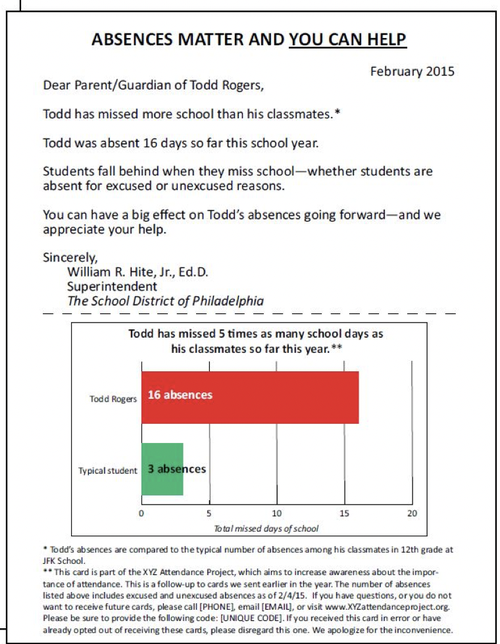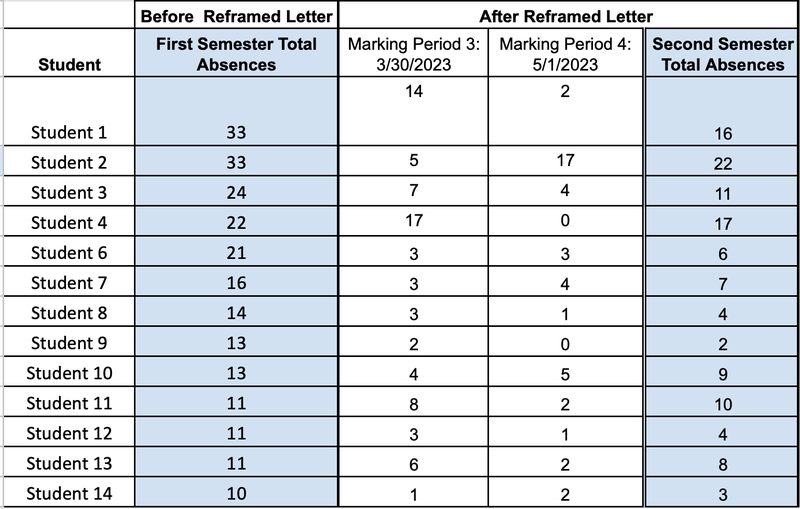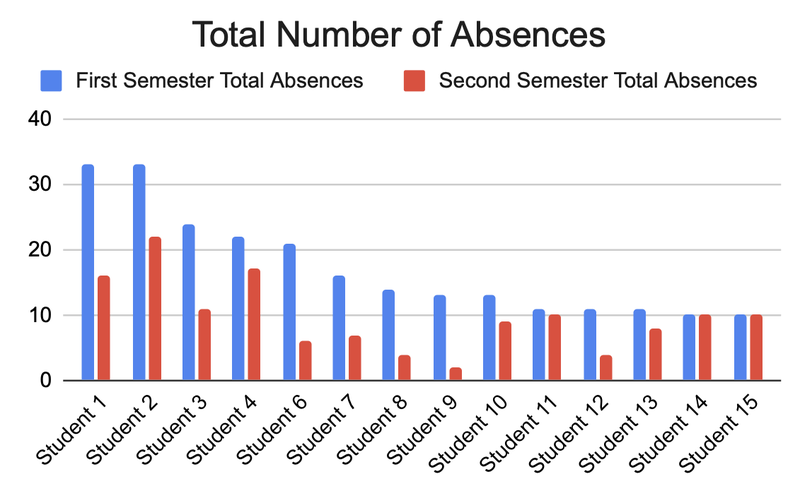
Reframing Attendance Letters
Authors:Most schools are required to send attendance letters home when students’ absences have reached a specific threshold (three days, five days, 10 days). The letter often has mandatory language, ultimatums and references state truancy laws. The question is are those letters effective? Do they improve student attendance? According to behavioral scientist Todd Rogers at Harvard’s Kennedy School of Government, the way an attendance letter is framed makes an impact on effectiveness.
The change is the reframed attendance letter. (This does not replace any district/state communication about attendance). Here's what is different:
- The language is clear and concise.
- There is no mention of laws or consequences.
- The letter is personalized with the student's name.
- The focal point of the letter is a simple data display that compares the students absences to the norm.
Below, is an example of a reframed attendance letter sent to the parent or guardian of a student who has missed 16 days. In that school, the typical student had only missed four days.

-
Research Base
Rogers, T. & Feller, A. (2018). Reducing student absences at scale by targeting parents’ misbeliefs. Nature Human Behaviour
https://scholar.harvard.edu/files/todd_rogers/files/rogers_sdp_-_final.pdf
-
Impact
Charles Priestly, Principal, Shue-Medill Middle School, Newark, Delaware
This idea was tested by Principal Charles Priestly with 14 sixth graders who were absent more that 10 days the first semester. The attendance letter was sent by January 26, 2023, the start of the second semester. The number of absences during the first semester was used as the baseline for comparison. The number of new absences for marking period 3 (March 30) and marking period 4 (May 1) were collected in the data table.

- Students 1 through 11 all had less absences in the second semester.
- Students 12 and Student 14's attendance remained stable.
Shue-Medill Middle School Comparison of Absences After the Reframed Attendance Letter

-
Practical Keys to Success
- Make the language clear and concise.
- Format the letter so that it can be skimmed and the important parts stand out.
- Send the letter in hard copy – not email. Dr. Rogers’ work shows that print copies stay in homes and get a stronger response as “artifacts” of the challenge. Digital versions get read on phones and often formatting is less than optimal. Emails get deleted. Attachments don’t reliably get opened.
- Include a graphic version of the comparison (your child compared to average student). Behavior scientists have learned that people want to do what is perceived as “normal.” Parents frequently do not perceive that absences are a problem until they know that their child’s absences are not typical.
- The most improved attendance came when letters were sent once a month.
- Collect data to measure possible improvement and sustain results.
-
Measurement
Measurement and Data Collection Tool
Record the total number of absences of each student in the test group. Record the total number of absences after the date the reframed attendance letters is sent home.





